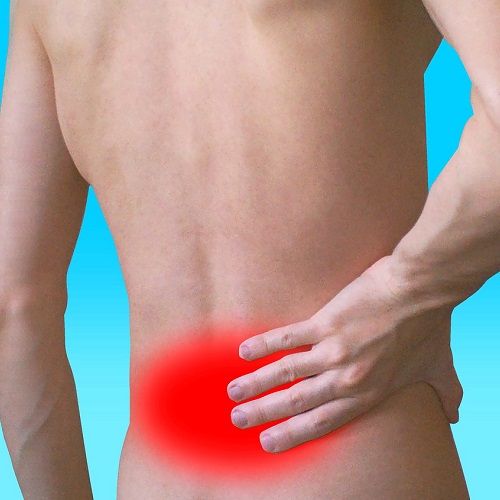For some, sciatica related pain can upend lives. It can leave people unable to carry out their usual daily activities and put a stop to their entire day. But there is a wealth of advice and resources that can help reduce that pain, providing much-needed sciatica relief.
What is Sciatica?
The sciatic nerve starts at your lower back and goes down to your feet. Sciatica is caused when that nerve is irritated in some way. The most common cause is by compression when the cushion of tissue between the bones in the spine is forced out by an injury. This is also known as slipping a disc.
When the sciatic nerve is compressed, people usually feel stabbing, shooting, or burning pains in one of their legs, feet, or toes. Instead of pain, they may feel a tingling, numbness, or sense of weakness in those areas.
The severity of the irritation to the nerve can change the significance of the pain. Mild sciatica is typically just an annoyance, whereas chronic sciatica can make it too painful to move. Most people get sciatica relief between 4 to 6 weeks, but the symptoms can last much longer.
What Are the Types of Sciatica?
It is believed that there are four types of sciatica. Understanding which type affects a patient could help to find the correct treatment for them.
Acute Sciatica
This is the most common form of sciatica. It is a one-off recent onset that will only typically last around a month. Usually not severe enough to stop daily activities, most people with acute sciatica rarely require treatment for it.
Chronic Sciatica
This includes pain that lasts much longer than 8 weeks and can be debilitating. Usually, some form of treatment is required for sciatica relief.
Alternating Sciatica
Sciatica typically only affects one leg. With alternating sciatica, the pain swaps legs throughout the day. Alternating sciatica is usually a sign of damage to the sacroiliac joint and should be investigated further.
Bilateral Sciatica
This type of sciatica affects both legs at the same time. Like alternating sciatica, this typically indicates that deeper damage has taken place in or around the spine. Therefore, it should be investigated by a doctor.
What Exercises Provide Sciatica Relief?
Though lying still and resting may be the first impulse when affected by sciatica, exercise and movement is typically best for sciatica relief.
If most movement is too painful, patients should do as much gentle exercise as they can. Any movement is a step closer to recovery.
When a patient is able to perform regular exercises, there are three groups they should focus on. It is usually recommended to turn these into a routine. Performing them often will provide the best results.
Aerobic Exercises
Any form of aerobic exercise is ideal for sciatica relief due to the release of endorphin hormones. These are know to fight pain. If possible, the patient should walk at their own pace for around three miles. This makes for an excellent and simple aerobic exercise. If that length is difficult, it is important patients do not push themselves. If it is too painful, they should stop. Pushing through the pain can make symptoms worse in the long term.

Core Muscle Exercises
These types of exercises strengthen the back, which is necessary for sciatica relief. People who engage regularly with core muscle exercises can recover from sciatica related pain faster. Example core muscle exercises are: abdominal crunches, bridges, and modified planks.
Hamstring Exercises
As sciatic pain affects the legs, exercises that strengthen the hamstrings are equally as important as the rest. Tight hamstrings increase the pressure on the lower back and have been known to cause symptoms of sciatica. Some hamstring exercises that are simple to do at home are: squats, bridges, and reverse planks.
What is the Most Effective Sciatica Relief?
Along with regular exercise, there are a couple of other things patients can try to get sciatica relief. Heat packs applied to painful areas can give temporary sciatica relief, but patients should be careful if they are experiencing numbness. It may mean they do not notice any damage they are doing to the affected area.
Placing a firm cushion between the knees when lying sideways can provide sciatica relief. Placing cushions underneath the knees when patients are lying on their backs can also provide sciatica relief.
Regular physiotherapy is one of the best ways to get onto the road of recovery. If that does not work, there are other things a patient can try.
If severe enough, a GP may refer a patient to a specialist who can apply painkilling injections. In some cases, surgery may be necessary. Fortunately, most people with sciatica will not need surgery. However, if symptoms persist despite treatment this may be the next logical step.
How to Stop Sciatica Coming Back
Most people who experience sciatica once are likely to experience it again later. Once the pain has subsided, it is important for patients to take steps to stop the damage occurring again. To reduce the risk of needing future sciatica relief, they should continue regular exercise. By keeping the body healthy, it reduces the chance of irritating the nerve again.
It is important for patients to sit and stand correctly, adopting good posture. This is especially true if they spend prolonged periods of time at a computer.
Overweight patients are often at increased risk of developing sciatica again. Therefore, weight loss is essential to reducing the likelihood of repeat sciatica incidences.
Our Mission
Telecare Choice strives to help people live confidently and independently in their own homes. If you have a condition that causes sciatica-related pains, our personal alarm systems may offer additional peace of mind. They are designed to help elderly and disabled people stay independent in their own homes. If you ever have a fall or feel unwell, pendant alarms will ensure that you can call for help quickly.
Find out more by calling our friendly team today. You can reach us on 0800 635 7000. Alternatively, get in touch online via our contact us page.
Order a Telecare Choice alarm online today and receive free next-day delivery.
Editor’s Note: This article was updated on 30th April 2024 to reflect current information.



